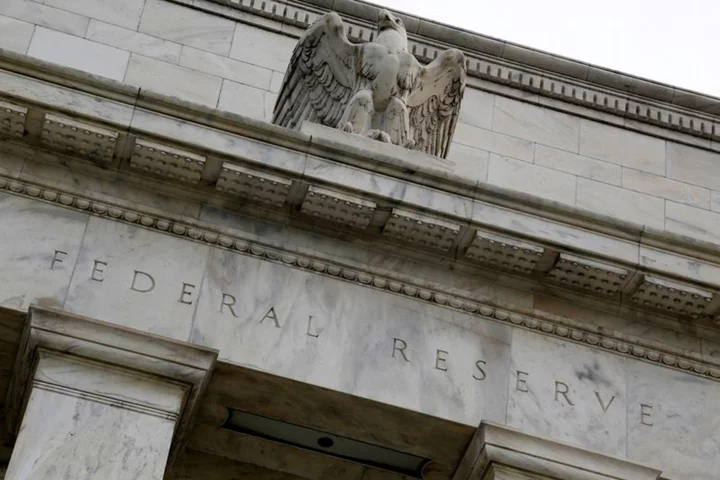U.S. economic activity was little changed over the last month and a half, as labor market tightness continued to ease and prices continued to increase at a modest pace, according to a Federal Reserve report published on Wednesday.
"The near-term outlook for the economy was generally described as stable or having slightly weaker growth," the Fed said in the latest "Beige Book," a compendium of surveys, interviews and observations gathered across the central bank's 12 districts, from Boston to San Francisco, through Oct. 6. "Overall, firms expect prices to increase the next few quarters, but at a slower rate than the previous few quarters," it said.
The economy-is-nearing-stall-speed vibe of Wednesday's report is somewhat at odds with a slew of government data in recent weeks that suggests the U.S. economy is gaining steam despite Fed interest-rate hikes designed to slow it.
Retail sales and manufacturing are growing faster than expected, employers have accelerated hiring, and underlying consumer prices rose last month at a 4.1% pace from a year earlier, more than twice the Fed's 2% target, the government data shows.
U.S. central bankers meet in two weeks time to set the policy rate, which in their effort to bring down too-high inflation they lifted from near zero in March 2022 to a range of 5.25%-5.50% by late July this year, where they have held it since.
As of their last meeting, in September, most policymakers felt they'd likely need to raise interest rates one more quarter of a percentage point before the end of 2023.
Despite the run of strong economic data since then, traders are betting heavily against any rate change at the upcoming meeting, particularly given the recent rise in longer-term Treasury yields.
Since the Fed's last rate hike on July 26, the yield on the 5-year note is up three-quarters of a percentage point, and the 10-year benchmark Treasury yield is up almost a full point.
Those higher yields mean steeper borrowing costs for households and businesses, helping the Fed's inflation fight by blunting demand for borrowing and hiring, some Fed policymakers have said - potentially mooting the need for any further rate hike.
Richmond Fed President Thomas Barkin says he is focused on the divide between the macroeconomic data, which suggests economic resiliency, and his own on-the-ground economic intelligence, which suggests more cooling in both spending and inflation.
In remarks on Wednesday Fed Governor Christopher Waller also pointed to the "puzzle" of strong consumer demand versus continued cooling in wage growth and inflation.
Investors are keen on hearing how Fed Chair Jerome Powell parses it all when he speaks on Thursday to the Economic Club of New York.
The Fed report published on Wednesday noted "expectations of firms for which the holiday shopping season is an important driver of sales were mixed."
(Reporting by Ann Saphir; Editing by Andrea Ricci)

